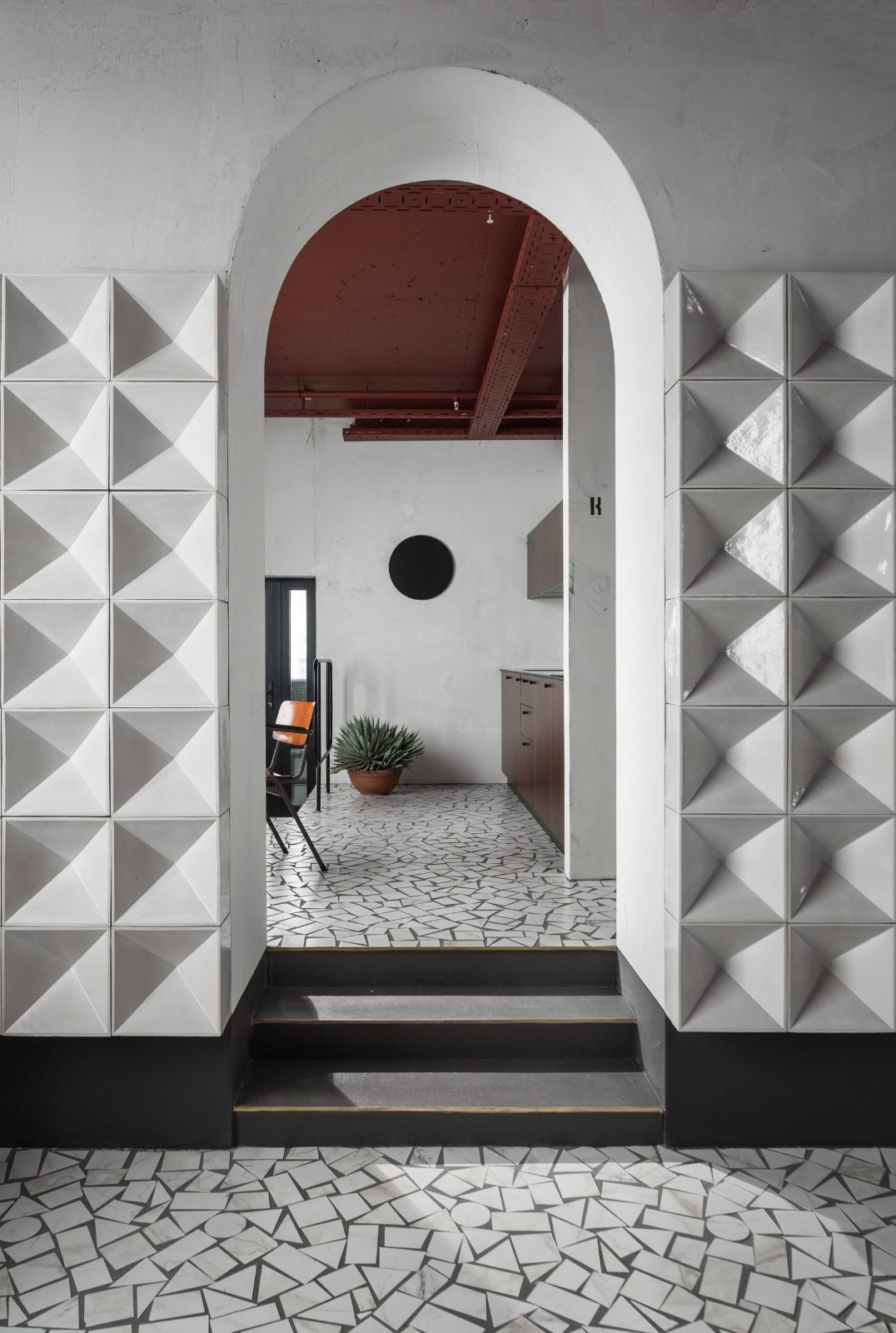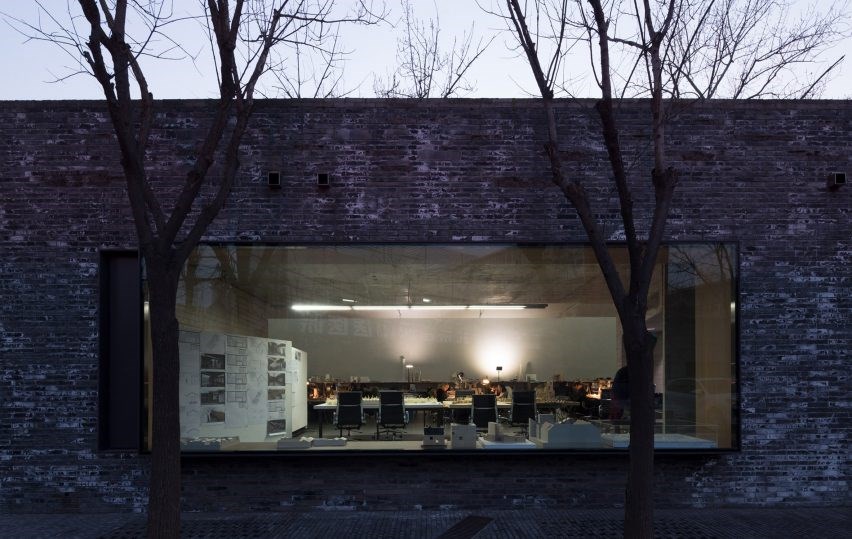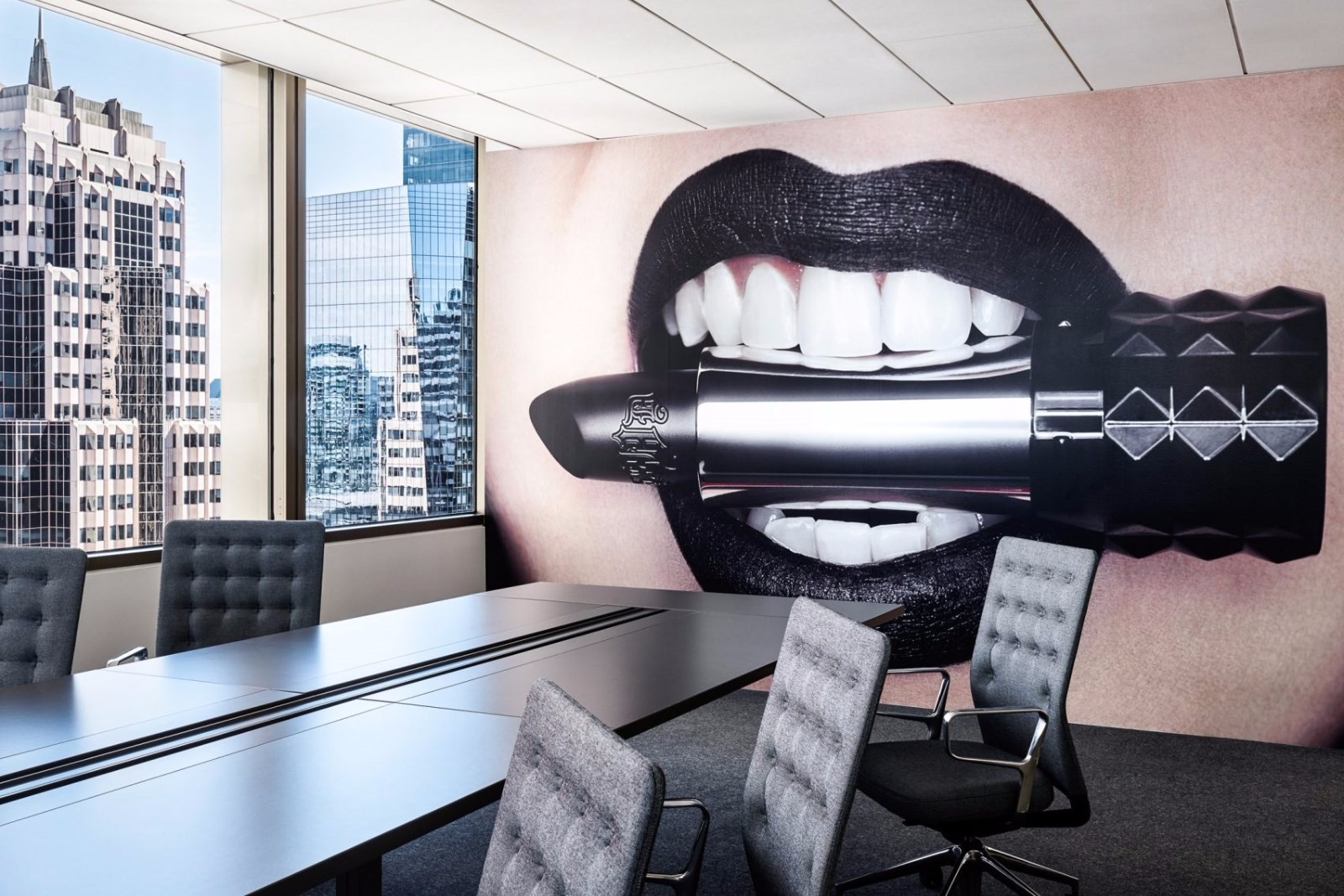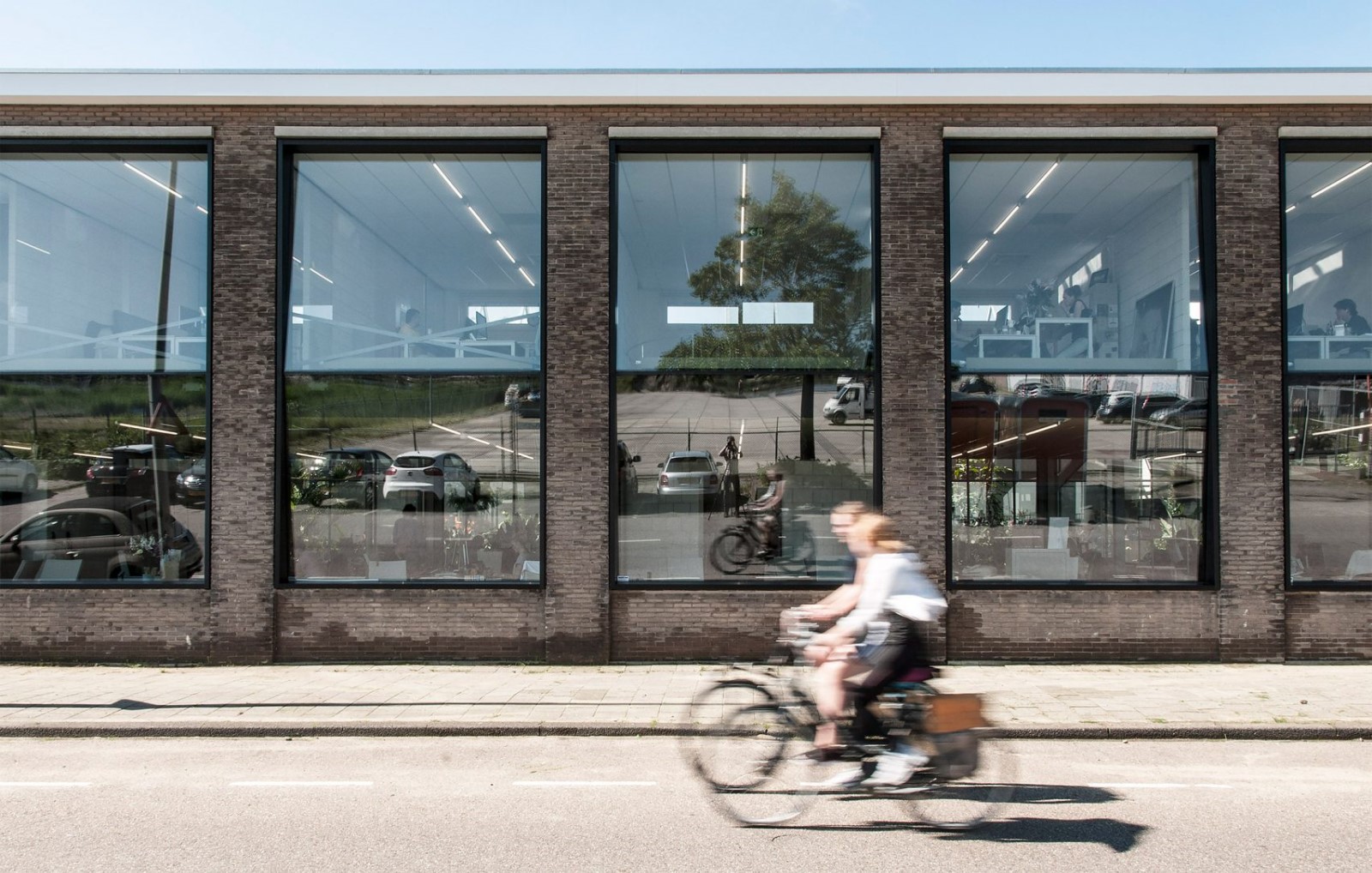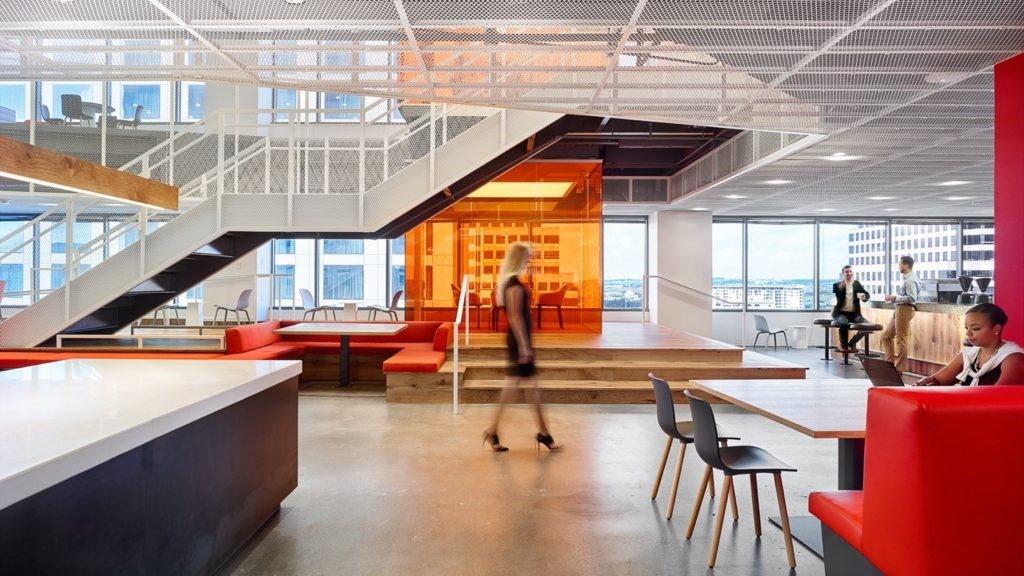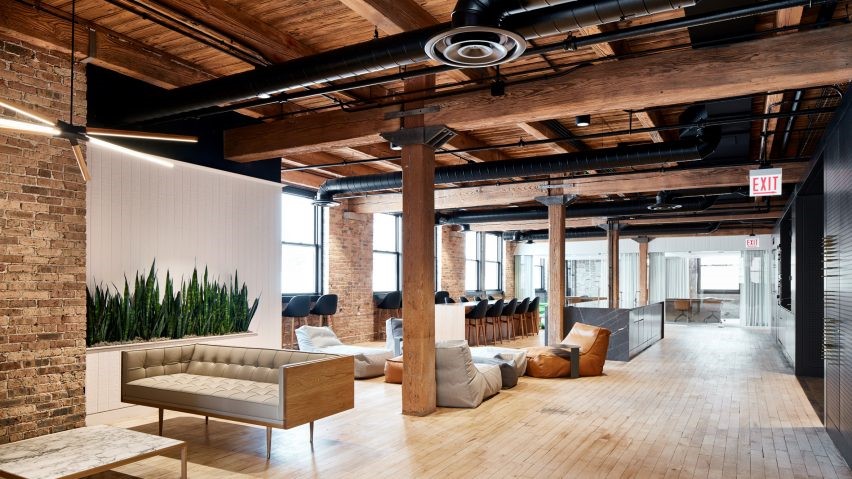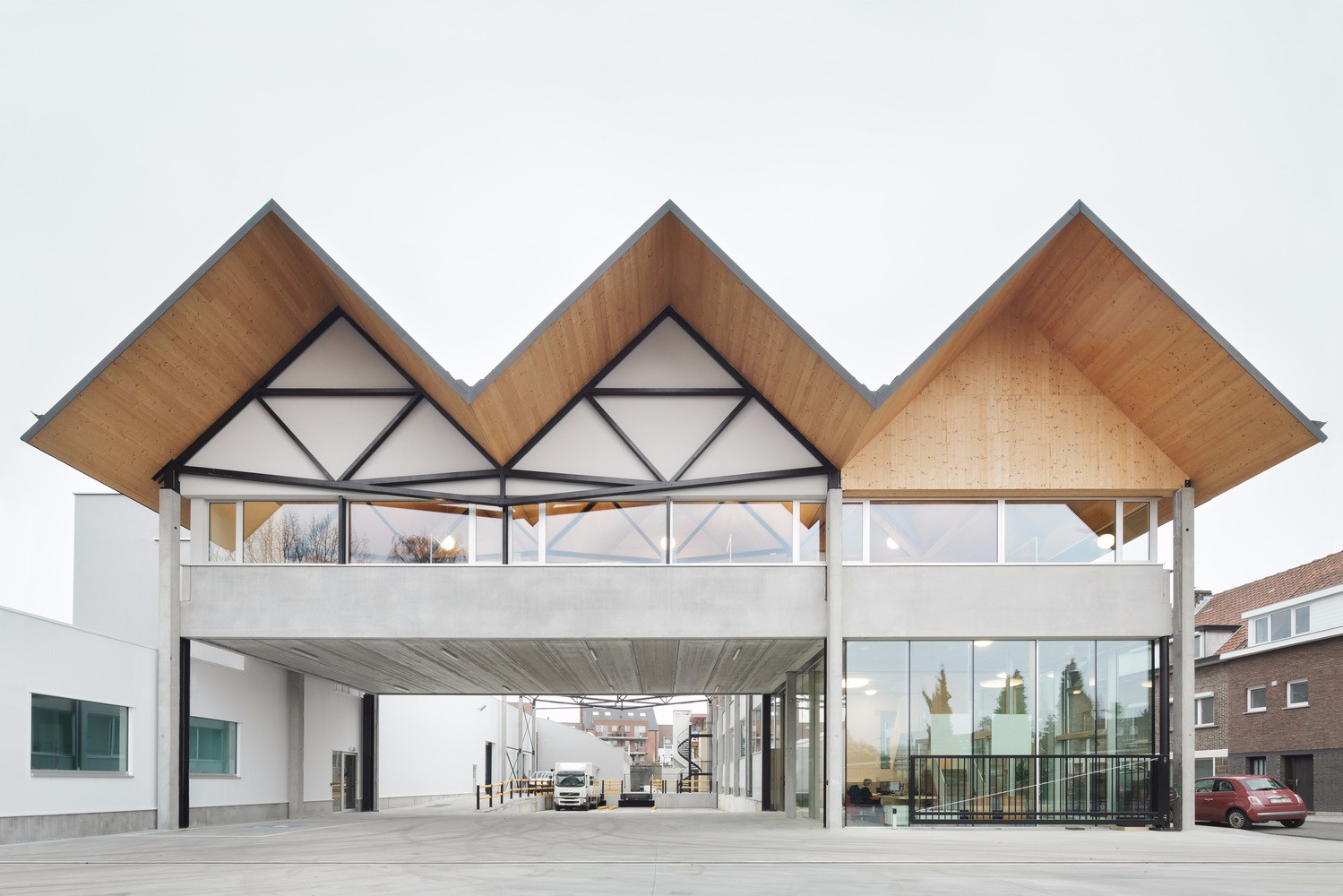Lascaux IV Snøhetta + Duncan Lewis Scape Architecture
2017-04-03 09:30
© Boegly + Grazia photographers
Boegly Grazia摄影师


架构师提供的文本描述。新的国际洞穴艺术中心(国际艺术中心)在蒙蒂尼亚克,法国欢迎游客的身临其境的教育经验的史前拉斯科洞穴绘画。被考古学家称为“史前西斯廷教堂”,由于其精神和历史意义,两万多年的绘画是旧石器时代已知的最好的艺术品之一。建筑师Sn hetta和SRA,以及编导卡森·曼,与考古学家团队紧密合作,创造了一个完整的博物馆和教育体验。作为一个以最先进的体验式讲故事技术为特色的口译中心,加上对洞穴的传真,拉斯科四世为游客提供了一个独特的发现洞穴的机会,以一种独特的方式揭示出一种神奇和神秘的感觉,就好像他们也是第一批偶然发现山洞画的冒险家。
Text description provided by the architects. The new International Centre for Cave Art (Centre International d’Art Parietal) in Montignac, France welcomes visitors to an immersive educational experience of the prehistoric Lascaux cave paintings. Known by archaeologists as the ‘Sistine Chapel of Prehistory’ due to their spiritual and historical significance, the 20,000-year-old paintings are among the finest known examples of art from the Paleolithic period. Architects Snøhetta and SRA, alongside scenographer Casson Mann, worked closely with a team of archaeologists to create a holistic museum and educational experience. As an interpretation center featuring state-of-the-art experiential storytelling technology paired with a facsimile of the caves, Lascaux IV offers visitors an opportunity to discover the caves in a unique way that reveals a sense of wonder and mystery, as if they, too, were the first group of adventurers to stumble upon the cave paintings.
© Boegly + Grazia photographers
Boegly Grazia摄影师




© Boegly + Grazia photographers
Boegly Grazia摄影师


新的拉斯科四洞博物馆位于两个独特的景观的交汇处,在一个密林的,受保护的山坡和农业维泽尔山谷之间。SN hetta的设计把博物馆想象成风景中的一幅精美的剪贴画,邀请游客进入一个充满好奇的史前世界。通过在当代设计中构建洞穴复制品的经验,该方法对抗了人工的潜在陷阱:该方法的物质性和几何学使游客能够理解他们是在复制,而不会分心于其影响的力量。博物馆的形式和物质性有一个完整的,冷静的表达,谈到周围的自然和镶嵌在山上的巨大的岩层,一个新的公共农业景观围绕着它展开。(鼓掌)
The new Lascaux IV Caves Museum is situated at the intersection of two unique landscapes, between a densely-forested, protected hillside and the agricultural Vézère Valley. Snøhetta’s design conceives the museum as a fine cut in the landscape, inviting visitors into a curious world of prehistory. By framing the experience of the cave replica in contemporary design, the approach counters the potential trap of artifice: the materiality and geometry of the approach allows the visitor to understand that they are in the presence of a reproduction, without distracting from the power of its impact. The form and materiality of the museum have a monolithic, sober expression, speaking to the surrounding nature and the massive rock formations embedded in the hill, with a new public, agricultural landscape unfolding around it.
© Boegly + Grazia photographers
Boegly Grazia摄影师


游客体验是经过仔细排序的。从大厅开始,游客通过电梯到达屋顶上的观景台,在那里他们可以欣赏到蒙蒂尼亚克和韦泽尔山谷的壮丽全景。然后他们沿着一个缓缓的斜坡向山洞传真机走去,然后沿着屋顶的斜坡向森林的边缘走去,直到到达复制品的入口。蜿蜒的道路穿过景观,并逐渐下降到等级,促进了在时间和空间中的精神转变,创造了类似于1940年洞穴第一位发现者的经历。
The visitor experience is carefully sequenced. Beginning in the lobby, visitors ascend by a lift to the belvedere out on the roof, where they can enjoy a magnificent panoramic view of Montignac and the Vézère Valley. They then descend a gentle slope towards the cave facsimile, which follows the incline of the roof towards the edge of the forest until reaching the entrance to the replica. The winding path through the landscape and gradual descent back down to grade facilitates a mental transition through time and space, creating an experience similar to that of the cave’s first discoverers in 1940.
© Boegly + Grazia photographers
Boegly Grazia摄影师




© Boegly + Grazia photographers
Boegly Grazia摄影师


在洞内传真机,大气潮湿和黑暗,重新创造了洞内的湿度。声音消沉了,温度降到了16摄氏度左右。这个序列致力于沉思,让人们体验到曾经的圣所。灯光闪烁,就像旧石器时代的动物脂肪灯一样,暴露出墙壁表面的一层层绘画和雕刻。(鼓掌)
Inside the cave facsimile, the atmosphere is damp and dark, re-creating the humidity within the caves. Sounds are muffled; the temperature drops to about 16 degrees Celsius. This sequence is dedicated to contemplation, allowing people an experience of the sanctuary that once was. Lights flicker just as the animal fat lamps of Paleolithic times did, revealing the layers of paintings and engravings on the surface of the walls.
© Dan Courtice
C.丹·考塔斯


该洞穴复制品是通过最先进的三维激光扫描和铸造技术,以复制原来的洞穴形状,以1毫米的公差。在建造之后,这些洞穴经历了一个仔细的模拟过程:25位艺术家花了2年的时间手工绘制了900米的树脂岩石复制品。为了确保最高的准确性,艺术家使用了与史前画家在两万年前使用的相同的颜料来重现1900年的绘画和雕刻,装饰着拉斯科四世的墙壁。
The cave replica was developed through the most advanced 3D laser scanning and casting technologies to replicate the original cave form to a 1 millimeter tolerance. Following the construction, the caves underwent a careful analog process: 25 artists spent 2 years hand-painting 900 meters of resin rock reproductions. To ensure the highest level of accuracy, artists used the same pigments that the prehistoric painters used 20,000 years ago to recreate the 1900 paintings and engravings that adorn the walls of Lascaux IV.
© Boegly + Grazia photographers
Boegly Grazia摄影师


离开传真机后,游客到达一个称为洞穴花园的过渡空间。这个露台提供了一个机会,重新适应外部环境后,强烈的内脏和情感经验的洞穴复制品。这一刻,与天空的关系,植物的存在和流水的声音。
Upon exiting the facsimile, visitors arrive at a transition space known as the Cave Garden. This patio provides an opportunity to re-adjust to the exterior context after the intense visceral and emotional experience of the Cave replica. The relationship to the sky, the presence of plants and the sound of flowing water frame this moment.
© Boegly + Grazia photographers
Boegly Grazia摄影师


在整个博物馆里,游客体验的顺序是大气、光线和强度之间的明显差异-从坐落在山上的封闭展览空间,到充满光线的大厅和过渡空间。下降和上升的并列,内外,地球和天空,或自然和艺术,唤起类似的经验洞穴。
Throughout the museum, the visitor experience sequences a balance of stark differences in atmospheres, light and intensities – from the enclosed exhibition spaces ensconced in the hill, to the light-filled lobby and transition spaces. The juxtaposition between descent and ascent, inside and outside, earth and sky, or nature and art, evoke the analogous experience of the caves.
© Boegly + Grazia photographers
Boegly Grazia摄影师


多个教育空间之间的定向区域被来自上方的日光裂缝照亮,为游客在展览之间重新安顿和休息创造了一个平静和沉思的区域,以及一个游客可以聚集的社交交汇点。
The orientation zone between the multiple educational spaces is illuminated by a fissure of daylight from above, creating a calm and contemplative zone for visitors to re-set and rest between exhibitions, as well as a social meeting point where visitors can gather.
© Boegly + Grazia photographers
Boegly Grazia摄影师


随后的解释中心提供互动展览,教授维泽尔山谷和洞穴绘画的丰富历史。数字学习经验增强了卡森·曼的装置,利用新的技术设备和交互式屏幕提供了专家、前历史学家和考古学家最近的研究结果。
The interpretive center that follows provides interactive exhibitions to teach the rich history of the Vézère Valley and cave paintings. Casson Mann’s installations are enhanced by digital learning experiences, employing new technological devices and interactive screens to offer the findings of the most recent research from expert pre-historians and archaeologists.


参观者可以使用一种被称为“附庸”(Companion De Visite)的设备,该设备是为博物馆专门设计的。交互式数字伴奏设备(CDV)将画廊空间从文字面板中解放出来-通过向过去的虚拟现实提供多层附加信息和视图,将艺术、历史、文化和沉思融为一体。
Visitors can engage with a device known as the ‘Companion De Visite’ specially designed for the museum. The interactive digital companion device (CdV) liberates the gallery spaces from text panels – blending art, history, culture and contemplation by offering layers of additional information and views into the virtual reality of the past.
© Boegly + Grazia photographers
Boegly Grazia摄影师


解释中心的第一个展览空间是工作室(L‘Atelier de Lascax),有8块挂着的岩壁碎片,参观者可以在那里更仔细地检查这些画。这个空间也提供了关于洞穴的历史,他们的发现,为什么真正的洞穴现在关闭,以及两万年前的艺术家是如何工作的信息。
The first exhibition space in the interpretive center is The Workshop (L’Atelier de Lascaux), with 8 hanging rock wall fragments, where visitors can examine the paintings more closely. This space also provides information on the history of the caves, their discovery, why the real cave is now closed, and how the artists of 20,000 years ago worked.
© Dan Courtice
C.丹·考塔斯


洞穴艺术剧院(勒剧院的艺术表演)展示了一个三幕戏,使用光,声音,电影和物体,以赋予拉斯科的洞穴艺术的故事生命。在电影院里,游客戴着3D立体眼镜观看3D电影,在洞穴中进行数字旅行。
The Cave Art Theatre (Le theatre de l’art paretial) presents a three-act play using light, sound, movies and objects to give life to the story of Lascaux’s cave art. In the Cinema, visitors wear 3D stereoscopic glasses for a 3D film on a digital voyage through the cave.
© Boegly + Grazia photographers
Boegly Grazia摄影师


在“想象画廊”(La galerie de l‘Imagaire)中,参观者可以探讨史前洞穴艺术对当代艺术家的影响。这一内容是由约翰保罗焦里,教授,哲学家和作家,他的工作致力于旧石器时代的艺术和艺术之间的关系。
In the Imagination Gallery, (La galerie de l’imaginaire), visitors are able to explore the influence of prehistoric cave art on modern and contemporary artists. This content has been curated by John Paul Jouary, professor, philosopher and author, whose work is devoted to the relationship between Paleolithic art and the art of our time.
© Boegly + Grazia photographers
Boegly Grazia摄影师


拉斯科四世是维泽尔山谷景观中一个引人注目的当代补充,它为史前艺术的一些最优秀的例子提供了新的体验,并提供了深刻的新方法来理解其遗址的丰富遗产。这个项目是由低科技和高科技元素组合而成的,从精心绘制的手绘复制品到虚拟现实展览,吸引参观者参与当代(重新)发现我们祖先的艺术。整体构想的中心将物理和解释概念和空间结合在一起,将旧石器时代的艺术与当代的空间和经验故事方式结合起来。
As a striking, contemporary addition to the landscape of the Vezere Valley, Lascaux IV frames a new experience of some of the finest known examples of prehistoric art, and offers profound new ways of understanding the rich heritage of its site. The project is forged of a combination of low-tech and high-tech elements, from the meticulously hand-painted replica to virtual-reality exhibitions, engaging its visitors in a contemporary (re)discovery of the art of our ancestors. Weaving together physical and interpretive concepts and spaces, the holistically conceived center unites Paleolithic art with contemporary approaches to spatial and experiential storytelling.
© Boegly + Grazia photographers
Boegly Grazia摄影师




























































































Architects Snøhetta
Location Avenue de Lascaux, 24290 Montignac, France Conseil Général de la Dordogne, France
Category Museum
Co-author Duncan Lewis Scape Architecture
Scenography Casson Mann
Area 8365.0 m2
Project Year 2017
Photographs Boegly + Grazia photographers, Dan Courtice


















